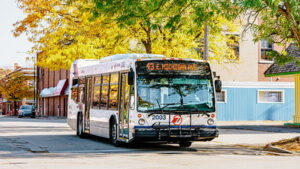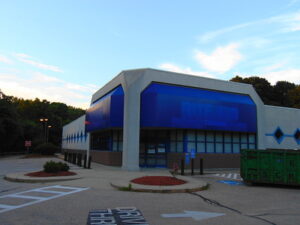In terms of higher education housing, the current discussion focuses on The Dorm at University of California Santa Barbara. Charlie Munger, a Berkshire Hathaway Vice Chairman, philanthropist, and amateur architect has offered $200M to build a dorm there. Critics have variously called Munger’s plan an architectural horror, a psychological experiment, and “ship-building on land.”
Granted, the design that Munger demands doesn’t have a lot to recommend it. The building, when built, will house 4,500 students. That’s attractive to UCSB because it currently has about 1,000 more students who want housing than UCSB has available beds. On the other hand, there are no windows in the students’ sleeping quarters.
The architect on the project quit rather than design the building according to Munger’s non-negotiable conditions.
This isn’t the first higher education housing project Munger has funded. The University of Michigan’s Munger Graduate Residences follows these same unconventional standards.
But another discussion is also taking place. It involves private universities going broke and public universities selling assets as they shrink their footprint. The University of Akron is actively discussing selling or leasing about one-eighth of its campus space for non-academic purposes. Over the last few years, UA has decommissioned and razed several former academic buildings on campus. It recently sold another facility to the Ohio Highway Patrol. And the pandemic has UA thinking about further reductions in its campus footprint.
Low-end player in the high-end higher education housing market
While large universities, like Big Brother and UCSB may become regular buyers in the student housing market, it’s becoming clear that higher education housing isn’t meant for every institution. The discussion of building student housing for WCC comes up often enough that the possibility has made its way into the current Master Plan.
While “student housing” is among the lowest priorities, the construction of a hotel for the “convention center” is among the highest. When the Master Plan was under discussion, certain Trustees re-iterated that there was little difference in their minds between a hotel and a dormitory. One even ridiculously suggested that it might be possible to operate a dormitory as a part-time hotel in the summer months. Or a part-time hotel that functioned as a dorm during the school year.
Living the dream in East OZ
I’ve been writing about public sector administrators’ chronic inability to recognize risk lately. Building a hotel, higher education housing or any other for-profit venture on campus seems risky. The biggest driver of that risk could be the Opportunity Zone that sits immediately off of WCC’s campus.
The OZ is bounded by Clark Road on the north, Hogback Road on the west, Washtenaw Avenue on the south and Golfside Road on the east. A large slab of that parcel belongs to Washtenaw County. The second-largest slab belongs to McKinley Properties in the form of Glencoe Hills/Glencoe Oaks and Golfside Lakes Apartments.
Under Donald Trump’s 2017 Tax Breaks and Job Cuts Act, OZ developers get some serious tax breaks for developing luxury student housing in OZs adjacent to campuses. (Gosh, what are the odds?) McKinley already owns property in the OZ and it would be easy to mow WCC’s grass by building a luxury development (or a hotel or retail space) there.
Projects like that could attract student residents from both WCC and EMU. And seriously undercut any hope of generating revenue from an on-campus hotel, student housing project or retail venture. It would leave the taxpayers (once again) paying for a poorly-thought-out “money-maker” dreamed up by people who claim to know what they’re doing.
Just something to think about.
Photo Credit: John Loo , via Flickr

























